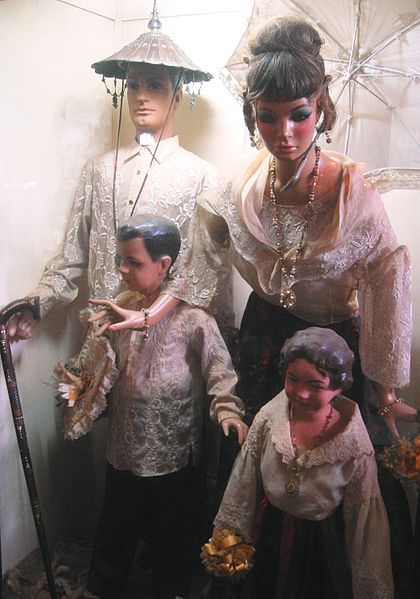The principalía or noble class was the ruling and usually educated upper class in the pueblos of Spanish Philippines, comprising the gobernadorcillo, tenientes de justicia, and the cabezas de barangay who governed the districts. Also included in this class were former gobernadorcillos or municipal captains, and municipal lieutenants in good standing during their term of office.
Typical costume of a family belonging to the principalía of the late 19th century Philippines. Exhibit in the Villa Escudero Museum, San Pablo, Laguna.
An illustration from Historia de las Islas e Indios de Bisayas (1668) by Francisco Ignacio Alcina depicting a Visayan datu and a binukot noblewoman.
Fray Bartolomé de las Casas
King Philip II of Spain by Titian.
The gobernadorcillo was a municipal judge or governor in the Philippines during the Spanish colonial period, who carried out in a town the combined charges or responsibilities of leadership, economic, and judicial administration. The gobernadorcillo was the leader of a town or pueblo. In a coastal town, the gobernadorcillo functioned as a port captain. They were appointed through an exclusive nomination provided by the Spanish law. Their term of office lasted for two years.
Extant record in the National Archives in Manila showing the 1855 election results in the province of Iloilo. This page shows the names of the gobernadorcillos elected by the principalía of Ajuy, Banate, and Barotac Viejo.
Abbreviated Spanish coat of arms at the entrance of Fort Santiago in Manila (reconstruction).
Principalía of Leganes, Iloilo c. 1880, in formal marching formation on a special occasion.







